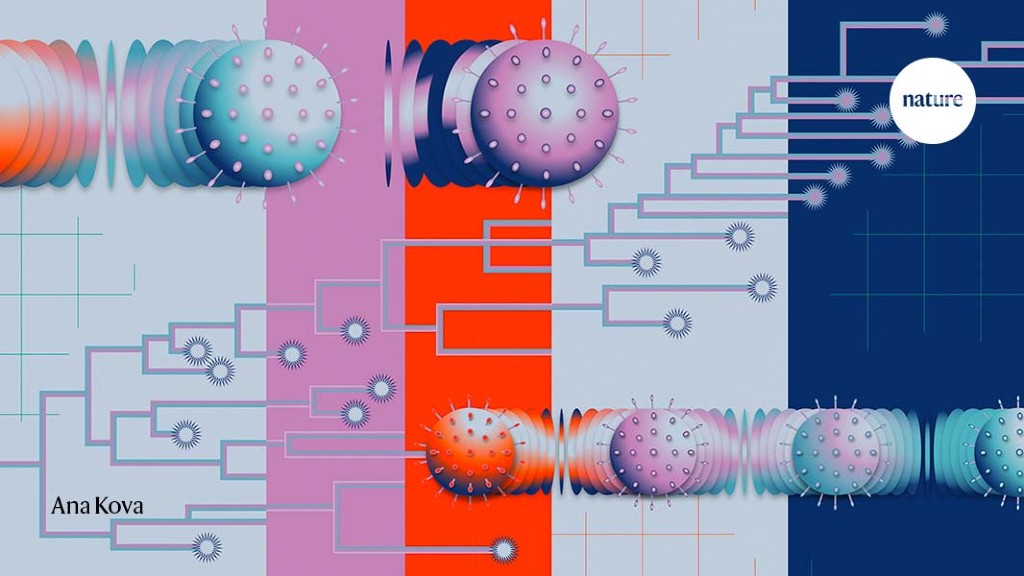As the world sped towards a pandemic in early 2020, evolutionary biologist Jesse Bloom gazed into the future of SARS-CoV-2. Like many virus specialists at the time, he predicted that the new pathogen would not be eradicated. Rather, it would become endemic — the fifth coronavirus to permanently establish itself in humans, alongside four ‘seasonal’ coronaviruses that cause relatively mild colds and have been circulating in humans for decades or more.
Bloom, who is based at the Fred Hutchinson Cancer Research Center in Seattle, Washington, saw these seasonal coronaviruses as potentially providing a roadmap for how SARS-CoV-2 might evolve and for the future of the pandemic. But little is known about how these other viruses continue to thrive. One of the best-studied examples — a seasonal coronavirus called 229E — infects people repeatedly throughout their lives. But it’s not clear whether these reinfections are the result of fading immune responses in their human hosts or whether changes in the virus help it to dodge immunity. To find out, Bloom got hold of decades-old blood samples from people probably exposed to 229E, and tested them for antibodies against different versions of the virus going back to the 1980s.
The results were striking1. Blood samples from the 1980s contained high levels of infection-blocking antibodies against a 1984 version of 229E. But they had much less capacity to neutralize a 1990s version of the virus. They were even less effective against 229E variants from the 2000s and 2010s. The same held true for blood samples from the 1990s: people had immunity to viruses from the recent past, but not to those from the future, suggesting that the virus was evolving to evade immunity.
“Now that we’ve had almost two years to see how SARS-CoV-2 evolves, I think there are clear parallels with 229E,” says Bloom. Variants such as Omicron and Delta carry mutations that blunt the potency of antibodies raised against past versions of SARS-CoV-2. And the forces propelling this ‘antigenic change’ are likely to grow stronger as most of the planet gains immunity to the virus through infection, vaccination or both. Researchers are racing to characterize the highly mutated Omicron variant. But its rapid rise in South Africa suggests that it has already found a way to dodge human immunity.
How SARS-CoV-2 evolves over the next several months and years will determine what the end of this global crisis looks like — whether the virus morphs into another common cold or into something more threatening such as influenza or worse. A global vaccination push that has delivered nearly 8 billion doses is shifting the evolutionary landscape, and it’s not clear how the virus will meet this challenge. Meanwhile, as some countries lift restrictions to control viral spread, opportunities increase for SARS-CoV-2 to make significant evolutionary leaps. ...
Scientists tracking the evolution of SARS-CoV-2 are looking out for two broad categories of changes to the virus. One makes it more infectious or transmissible, for instance by replicating more quickly so that it spreads more easily through coughs, sneezes and wheezes. The other enables it to overcome a host’s immune response. When a virus first starts spreading in a new host, the lack of pre-existing immunity means that there is little advantage to be gained by evading immunity. So, the first — and biggest — gains a new virus will make tend to come through enhancements to infectivity or transmissibility. ...


Recent Comments